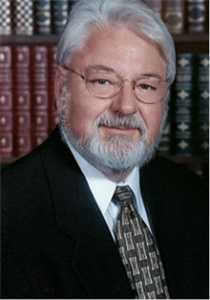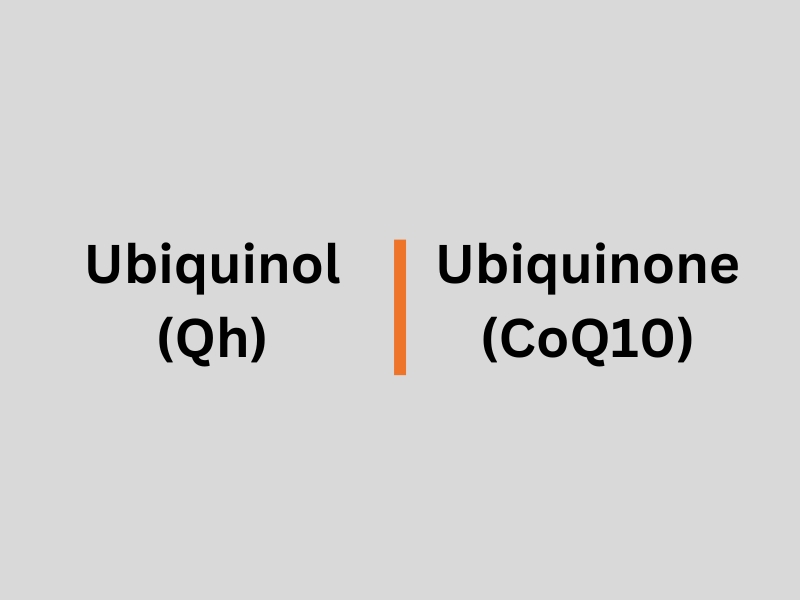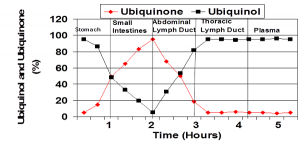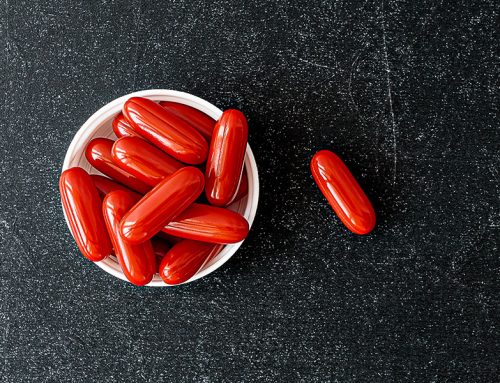
Dr. William Judy.
Retired Indiana University School of Medicine professor of physiology and bio-physics.
Author of “Coenzyme Q10 Facts or Fabrications.”
Recently, I asked Dr. William Judy, the founder and president of the Southeastern Institute of Biomedical Research (SIBR), whether he would change any of the text of his often-cited 2007 paper entitled Coenzyme Q10 Facts or Fabrications. I thought perhaps some new information might have come to light in the intervening years.
No changes, said Dr. Judy. He remains convinced, based on the current state of research and development in the Coenzyme Q10 field, that a well absorbed ubiquinone Q10 supplement is the best choice.
Ubiquinol not absorbed as ubiquinol
In Dr. Judy’s opinion, the ubiquinol form is not absorbed as ubiquinol. Please notice that he says not absorbed as ubiquinol. Instead, studies show that when ubiquinol is ingested, the ubiquinol released from the capsule is converted to ubiquinone in the stomach and in the small intestine before absorption of Q10 takes place.
Dr. Judy’s investigations of ubiquinol
Following up on my question, Dr. Judy told me a story from the early days of the commercial introduction of ubiquinol.
When ubiquinol first became commercially available in the USA in 2007, he and the researchers at SIBR purchased a bottle of the new ubiquinol product, cut open some capsules, and exposed the ubiquinol contents to room air.
Conversion to the ubiquinone form
In less than 4 hours, the ubiquinol from the capsules started to turn to the yellow color of ubiquinone. Within 24 hours, the ubiquinol was converted to 100% ubiquinone.
Ubiquinol in gastric juices
The SIBR researchers then put the ubiquinol from the capsules into gastric juices taken from the stomach. In an hour, the ubiquinol was a bright yellow color; the ubiquinol had converted to ubiquinone.
International Q10 researchers’ meeting in Kobe, Japan
Dr. Judy and his colleagues made some photographs of the Q10 forms from the ubiquinol capsules. He took the photographs and the chemical analysis showing the conversion of ubiquinol to ubiquinone to a meeting of the members of the International Coenzyme Q10 Association in Kobe, Japan, in November, 2007.
At the meeting, he told Q10 researchers that he did not believe that ubiquinol is absorbed as ubiquinol. He showed the Q10 researchers his data, and he explained what he had discovered about the non-absorption of ubiquinol.
In Kobe, both Dr. Judy’s data on the conversion of ubiquinol to ubiquinone before absorption and his paper Coenzyme Q10: Facts or Fabrications became discussion issues.
Ubiquinol studies in animals
Meanwhile, in 2009, when time permitted, Dr. Judy continued his study of ubiquinol and did a series of studies in large animals (dogs).
He and his colleagues put sampling catheters in the stomach, small intestine, abdominal and the thoracic lymph ducts, and subclavian vein of dogs. They then took samples after giving the dogs 100 mg of ubiquinol by gastric gavage.
What were the results?
Ubiquinol seen to be converted to ubiquinone
The researchers saw the ubiquinol begin to turn to ubiquinone in the stomach and in the small intestine. Please see the graph below in Figure 1.
Transport in lymph and blood
They were able to see the absorbed Q10 appear first in the abdominal lymph duct. It was almost all ubiquinone. This told them that the ubiquinol was not being absorbed as ubiquinol but as ubiquinone. In the middle and distal part of the abdominal lymph duct, the researchers saw the ubiquinone beginning to turn to ubiquinol. By the time it was in the thoracic lymph duct, the ubiquinone had all been converted to ubiquinol.
It took almost four hours for the ubiquinone to traverse the lymph system and empty into the subclavian vein. Dr. Judy has slides of the data from these animal studies. The graph below shows the progression of the administered ubiquinol from the stomach to the blood and the proportional amounts of ubiquinone and ubiquinol at various stages.
Figure 1. Percentages of ubiquinol and ubiquinone over time in the stomach, the small intestine, the lymph, and the blood. Courtesy: SIBR Institute.
Q10 in the cells
Not shown on the graph is that, upon entering the cells, about half of the ubiquinol is converted back to ubiquinone where it is essential in the energy production process. We know that the cellular content of ubiquinone tends to be slightly higher than the cellular content of ubiquinol.
Conversion from ubiquinol to ubiquinone not surprising
This conversion from one form to the other should not surprise us. Q10 molecules are redox molecules that, alternately, lose electrons and become oxidized and gain electrons and become reduced.
Both forms are important to our health. The oxidized ubiquinone Q10 form is vital to the process of cellular energy production. The reduced ubiquinol QH2 form is vital for antioxidant protection in the cells.
Ubiquinone Q10 far more stable than ubiquinol QH2
But what remains unclear in the years since the introduction of commercial ubiquinol products is why a person would want or need to take an unstable ubiquinol substance that will be converted in the stomach to its ubiquinone form anyway?
Why take the trouble to ingest ubiquinol QH2 instead of ubiquinone Q10 when the gastric juices will oxidize the ubiquinol and change it to the ubiquinone form anyway?
The further question is why the person would need to take the supplement in a form different from the form in which the body itself synthesizes the substance. When the body makes Coenzyme Q10, it makes the ubiquinone form.
Ubiquinone Q10 far better researched than ubiquinol
At this point, the marketing claims for ubiquinol far exceed the publication of research results. For the Q10 in the ubiquinone form, we have more than 30 years of research establishing the safety of the substance. We have two big gold standard studies (Morisco and Mortensen) that show that Q10 supplementation of heart failure patients leads to improved symptoms and improved mortality and fewer hospitalizations and fewer adverse cardiovascular events.We have good meta-analyses of the beneficial effect of ubiquinone Q10 supplementation on heart failure patients.
We have a big gold standard study that shows that long-term supplementation with ubiquinone Q10 and an organic selenium yeast will reduce cardiovascular mortality.
We have a good clinical trial that shows that ubiquinone Q10 supplementation improves symptoms and quality of life for veterans suffering from Gulf War Syndrome.
Source:
Judy, W.V., Stogsdill, W.W., Judy, D.S., & Judy, J.S. (2007). Coenzyme Q10: Facts or Fabrications? Natural Products Insider. Retrieved from http://www.zmc-usa.com/docs/CoQ10_Facts_or_Fabrications.pdf










Leave A Comment